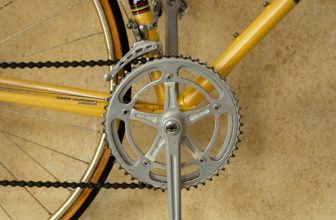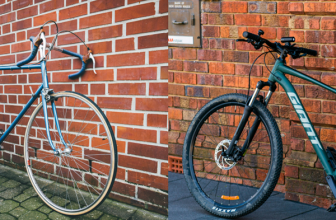New Technology Makes Bike Safety “High-Res”

Whenever someone talks about lidar and biking, it typically involves autonomous navigation. Lidar is a laser-powered technology similar to sonar that bikes and cars use to detect other vehicles. Now, UM-Dearborn Assistant Professor Fred Feng has developed a new application for the technology that could be a great boon for people working in active mobility and bike enthusiasts.
Feng has attached all manner of sensors to vehicles and bicycles for years as part of his ongoing research. Most of this technology is video cameras or GPS systems. These systems work well enough, especially for capturing detail observational data on the real world experiences of bike riders. However, Feng says that the technology has some limitations that must be overcome. For example, to take a detailed look at overtaking on a bike, which is a high-risk scenario where a driver passes the cyclist on the road, the cameras can’t give you an accurate measurement of how close the car gets to the rider. Even if you managed to fit a proximity sensor to the bike, it can only take a single measurement. It will only record something the moment the car temporarily draws even with a cyclist.
Feng’s new lidar system is a bit different. The system mounts to the back of a bike and gives observers a full 360-degree map of the entire situation. Feng says that using the lidar data shows researchers the whole process, from the vehicle approaching from behind, passing the cyclist, and continuing down the road. The lidar data also offers insights on other details, such as how fast the car travels and how it moves and other environmental objects.
Feng says there are several applications for the comprehensive data on how cyclists and drivers interact. Road engineers could use the data and technology to find problematic parts of the road and build safer roads for everyone. Product designers could use the data to create new and improved safety devices. Safety researchers could study the data to assess their own road safety interests. The team plans on making the data public to encourage this.
Incidentally, making the data public is easier with lidar-based systems. The data from lidar isn’t covered in potential privacy issues like camera data is, such as the facial features of passersby who didn’t consent to being part of the research data.
In fact, while Feng says he doesn’t have any immediate plans to do so, recent advancements to lidar technology could allow him and his team to study safety issues regarding pedestrians. Until recently, lidar systems were too big and too expensive to put on bikes. As lidar-sensing technology gets better, new possibilities have opened up. Now it’s possible to mount lidar onto a bike and see how bikes interact with other road users and pedestrians alike.
Give the technology a few more years and we could see lidar systems small enough to stick on your arm. These systems would give researchers invaluable data for study and potentially protect users as well.








